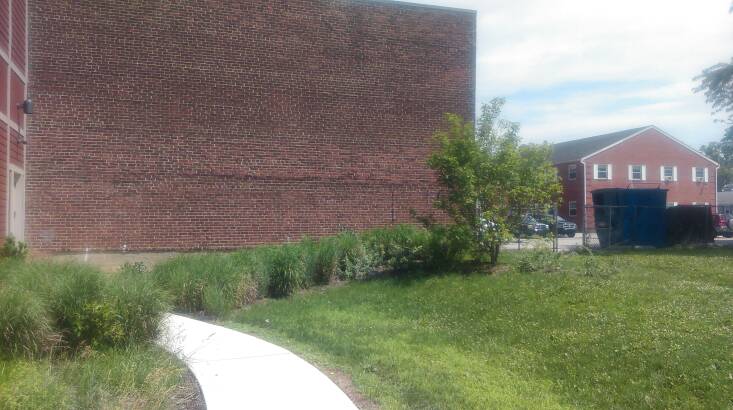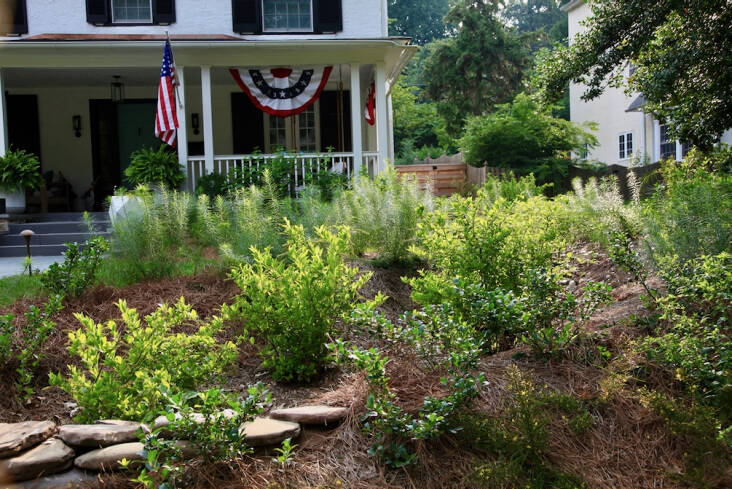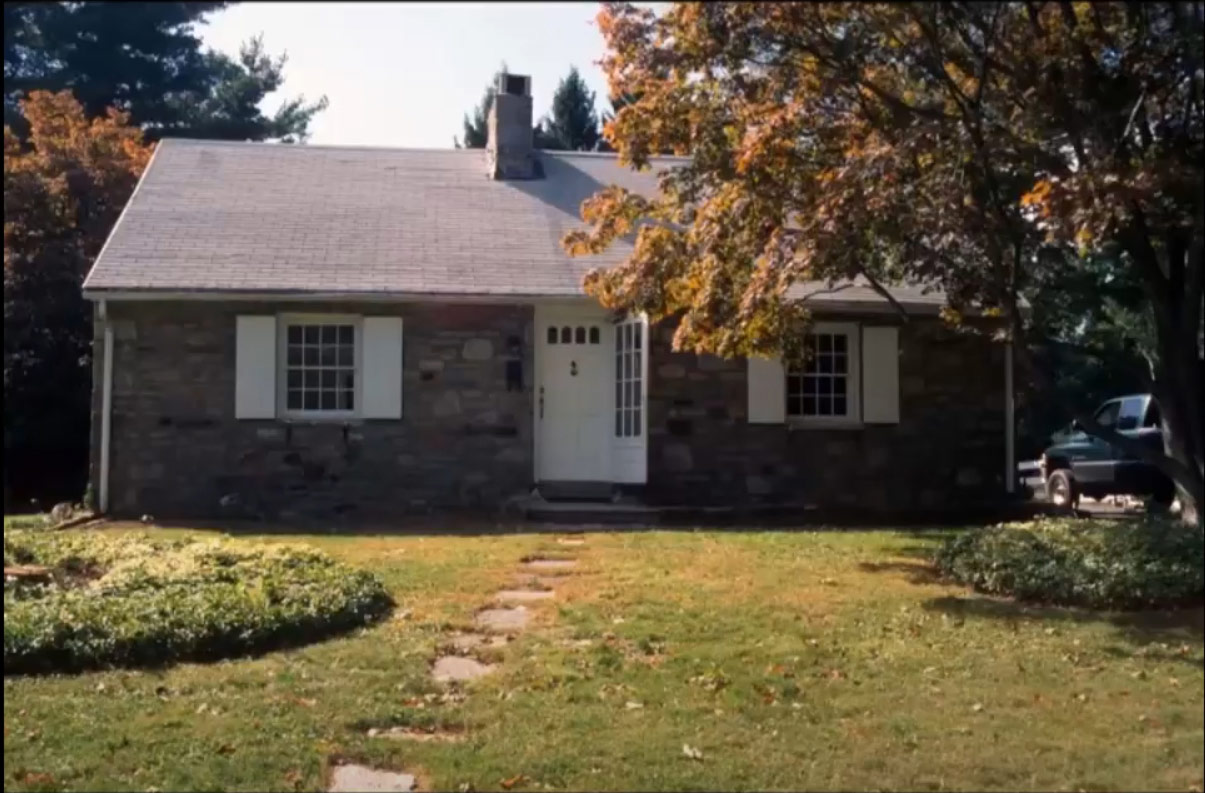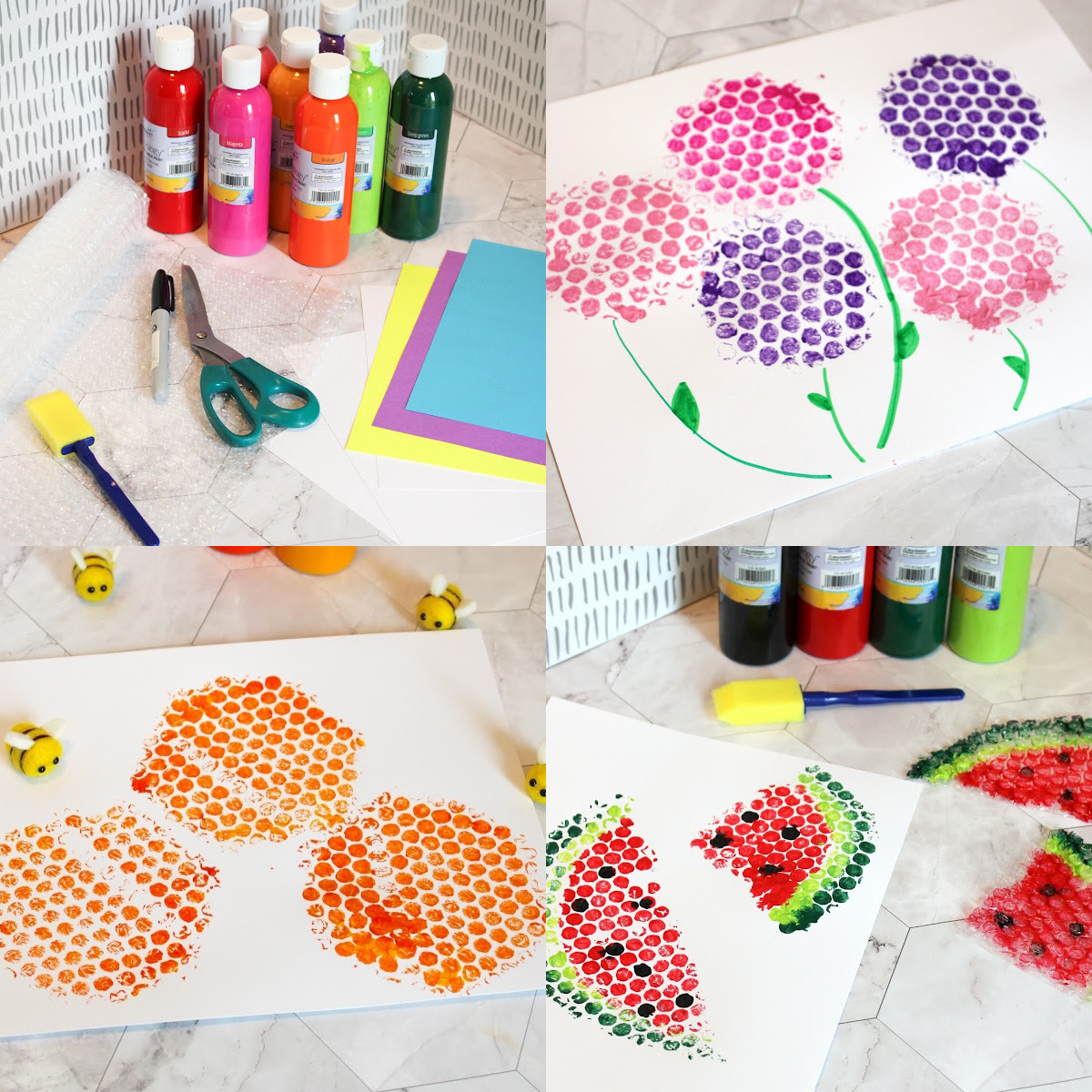As rain events have become more intense and more frequent, you may have noticed stormwater from the street flooding your property, rainwater from downspouts carving gulleys into your yard, or a wet patch that never seems to dry out. All of these issues can be addressed with plants.
Jeff Lorenz, the founder of Refugia Design in Philadelphia, is known for designing immersive, native landscapes, but he’s also developed something of a knack for creating gardens that effectively manage stormwater. Refugia’s style is naturally well-suited to the task: The native plants that they work with are good at Lorenz’s three rules of stormwater management:
- Slow down stormwater, allowing the ground to absorb the initial surge.
- Spread the flow of water across the surface.
- Soak water back into the aquifer with the help of deep-rooted vegetation.

Plus, planting densely, as Refugia does, is a stormwater management trick in its own right. “Rain gardens seem complicated, and sometimes they are for good reason, especially in larger applications, but for most residential settings, just creating larger, more vegetated planning beds has a great impact on stormwater issues,” says Lorenz.
Below, he offers tips on how to have leverage your garden to help with stormwater management.
Photography by Kayla Fell, courtesy of Refugia Design.
Reduce your lawn and increase your beds.

“Reducing your lawn has a massive impact on stormwater,” says Lorenz. “We call it green concrete because it has very little absorption quality.” Consider expanding garden beds. Fall is a great time to plan for this, as you can pile up leaves on the part of the lawn you plan to turn into new beds come spring (see Why (and How to) Leave the Leaves). Two places Lorenze says you should definitely consider expanding your beds are where downspouts flow out, and anywhere your border beds are close to a low, wet point in the lawn. “Bring your garden bed out to incorporate that low point.”
Rethink how your care for your lawn.

For the lawn you do keep, consider tweaking your care routine. Let the grass grow higher and mow less often. “If you have a thicker, taller vegetation above ground, that’s going to help slow stormwater down,” says Lorenz. When it’s time to reseed, consider reseeding with fine fescues (and gradually transitioning the whole lawn), or if you’re open to a bigger change, replacing the turf with a full fescue or sedge lawn. Lorenze notes that in trials at the Mt. Cuba Center wood’s sedge (Carex woodii) was the best performing sedge lawn alternative for the Mid-Atlantic that can tolerate moderate traffic. (For more on this grass-like perennial, see Trend Alert: A Carex for Every Garden.)
Irrigate less.
Your irrigation might also need some rejiggering. “We discover a lot of properties that are always at a point of saturation because they’ve got these robust sprinkler systems that are keeping the ground wet,” says Lorenz. The ground loses its ability to absorb water in an actual storm, if it’s already saturated, but if it has the chance to dry out a bit and it has more absorbing capability. Dialing back your watering schedule will also have a positive impact by reducing the water your yard consumes. The ultimate goal is not to irrigate at all, says Lorenz, “We aim to make irrigation systems redundant, by using plants resilient in your area, that don’t require long-term coddling.”




